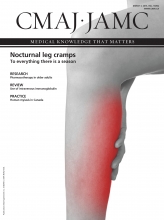A directed history can guide management of dyspepsia
Dyspepsia refers to symptoms of epigastric pain, burning, postprandial fullness or early satiety, sometimes with heartburn.1 The most common endoscopic findings for new cases are reflux esophagitis (40%), and gastric and duodenal ulcers (10%).2 Alarm symptoms (Box 1)3 should prompt referral for upper endoscopy.4
Choosing Wisely Canada recommendations on dyspepsia3
Don’t maintain long-term PPI therapy for gastrointestinal symptoms without an attempt to stop or reduce PPI at least once per year in most patients.
Avoid using an upper gastrointestinal series to investigate dyspepsia.
Avoid performing an endoscopy for dyspepsia without alarm symptoms* for patients under the age of 55 years.
Note: PPI = proton pump inhibitor.
↵* Alarm symptoms are vomiting, bleeding or anemia, abdominal mass or unintended weight loss, and dysphagia (acronym: VBAD).
Endoscopy is the preferred diagnostic modality if alarm symptoms are present
Patients with alarm symptoms undergoing endoscopy were found to have clinically significant peptic ulcer disease and gastric cancer in 13% and 4% of cases, respectively.5 Because the prevalence of serious abnormalities increases with age, an endoscopy should be considered for those aged 55 years or older with new-onset symptoms.3,4 Upper gastrointestinal barium studies are less accurate than gastroscopy and should not be used if alarm symptoms are present (Box 1).3
Use of NSAIDs is common in people with dyspepsia
Up to 30% of patients with dyspepsia in a Canadian population were found to be taking nonsteroidal anti-inflammatory drugs (NSAIDS) (including acetylsalicylic acid).2 Eliminating the use of NSAIDs or dose reduction is often effective for dyspepsia.6
An eight-week trial of once-daily PPI therapy can be considered in patients with reflux-like dyspepsia7
Those requiring continuous acid-suppressive therapy for symptom control should use the lowest effective dose and try stopping the treatment at least once per year (Box 1) because of potential adverse effects of long-term proton pump inhibitor (PPI) use.3 Absence of symptom benefit makes it unlikely that symptoms are acid-related, and the PPI should be discontinued.3 There is little evidence that prokinetic agents (e.g., domperidone) are efficacious in dyspepsia, either alone or with a PPI.8 For nonresponders, gastroscopy should be considered.
Patients with new-onset dyspepsia should be tested for Helicobacter pylori infection
The overall seroprevalence of H. pylori infection in Canada is about 30%, but declining in younger Canadians. Much higher rates are seen in immigrant and First Nations populations.9 The urea breath test is the preferred diagnostic test. Although serologic tests are available, they cannot be used to document cure. For patients testing positive for H. pylori, the newer sequential therapy (Appendix 1, available at www.cmaj.ca/lookup/suppl/doi:10.1503/cmaj.141606/-/DC1) should be used rather than the older PPI-based triple therapy with clarithromycin and amoxicillin.10
CMAJ is collaborating with Choosing Wisely Canada (www.choosingwiselycanada.org), with support from Health Canada, to publish a series of articles describing how to apply the Choosing Wisely Canada recommendations in clinical practice.
Footnotes
See references, www.cmaj.ca/lookup/suppl/doi:10.1503/cmaj.141606/-/DC1
Competing interests: Sander Veldhuyzen van Zanten has received an honorarium from Takeda, which makes proton pump inhibitors. No competing interests were declared by Daniel Sadowski.
This article has been peer reviewed.











